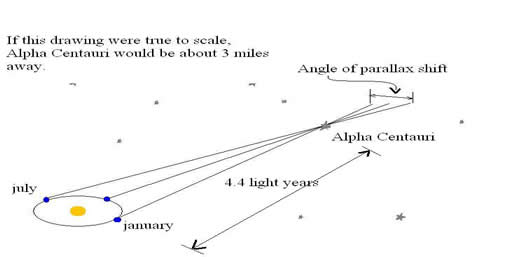1.Parallax Effect
Parallax is a Greek word that describes the apparent shift in position of a nearby object, in relation to more distance objects, when we change the angle from which we study the object. If you hold your finger at arm's length and close first one eye and then the other, you will see your finger undergo a parallax shift with respect to the background objects.

The parallax shift causes the apparent positions of nearby stars, such as Alpha Centauri, to shift back and forth against the background of much more distant stars as the Earth orbits the sun. By measuring the amount of the parallx shift, astronomers can determine the distances to nearby stars by trigonometry.
We know the distance from The Earth to the Sun (suppose, R). Therefore, here by trigonometry,
Distance of star from Earth = ( 2 * R ) / Angle of shift
The key to parallax effect is that the amount of parallax shift decreases as the distance to a star increases. Therefore, if the amount of errorin the parallax shift introduced by atmospheric blurring equals or exceeds the parallax shift itself, then we cannot hope to measure the shift in any meaninigful way. This atmospherically induced limit prevents astronomers from measuring any angles smaller than about one-fiftieth of a second of arc. But even the closest stars have parallax shift of less than one second of arc! In other words, our atmosphere prevents us from triangulating the distances to any stars that are more than 250 light years from us.
So, to measure more distant stars or galaxies, we have to use other method.